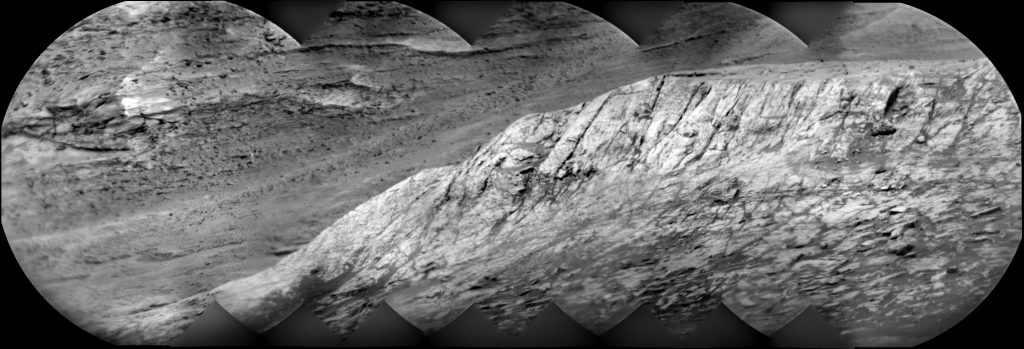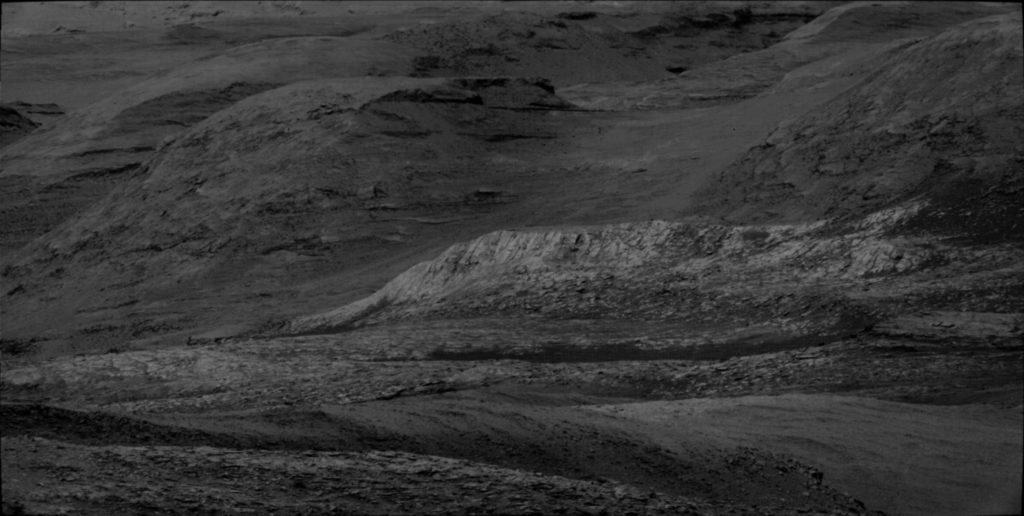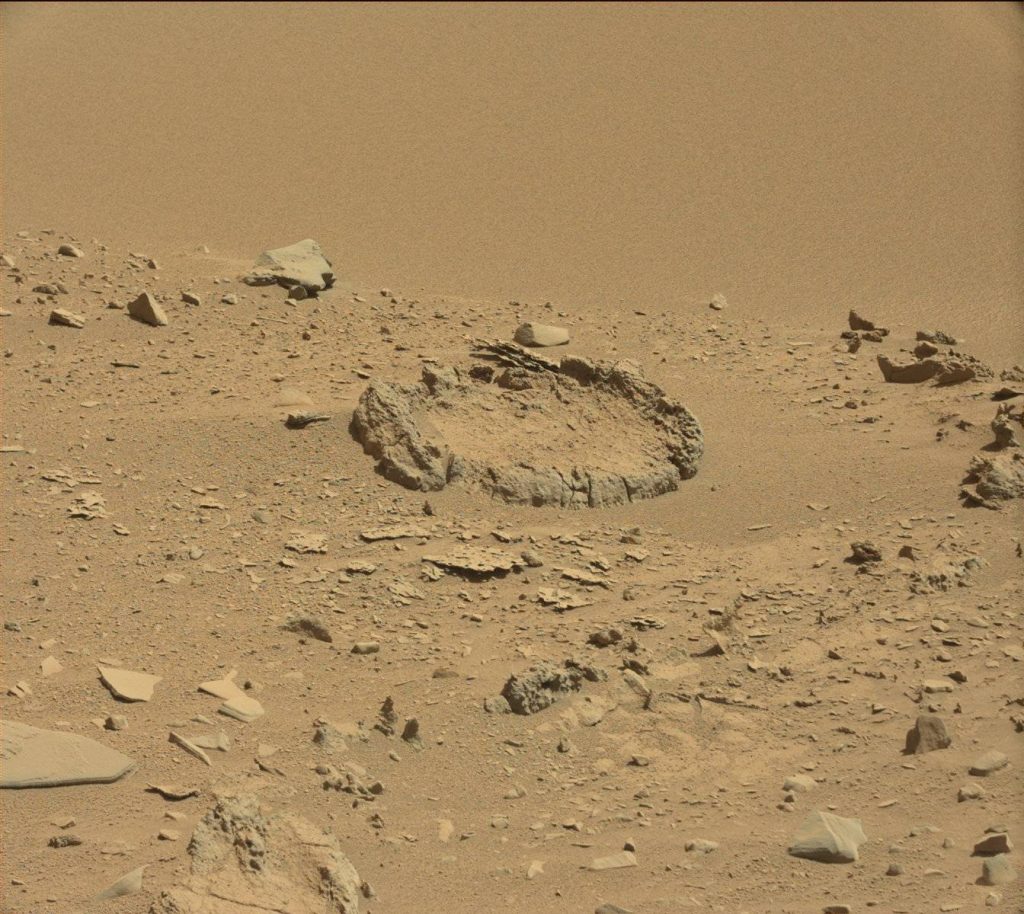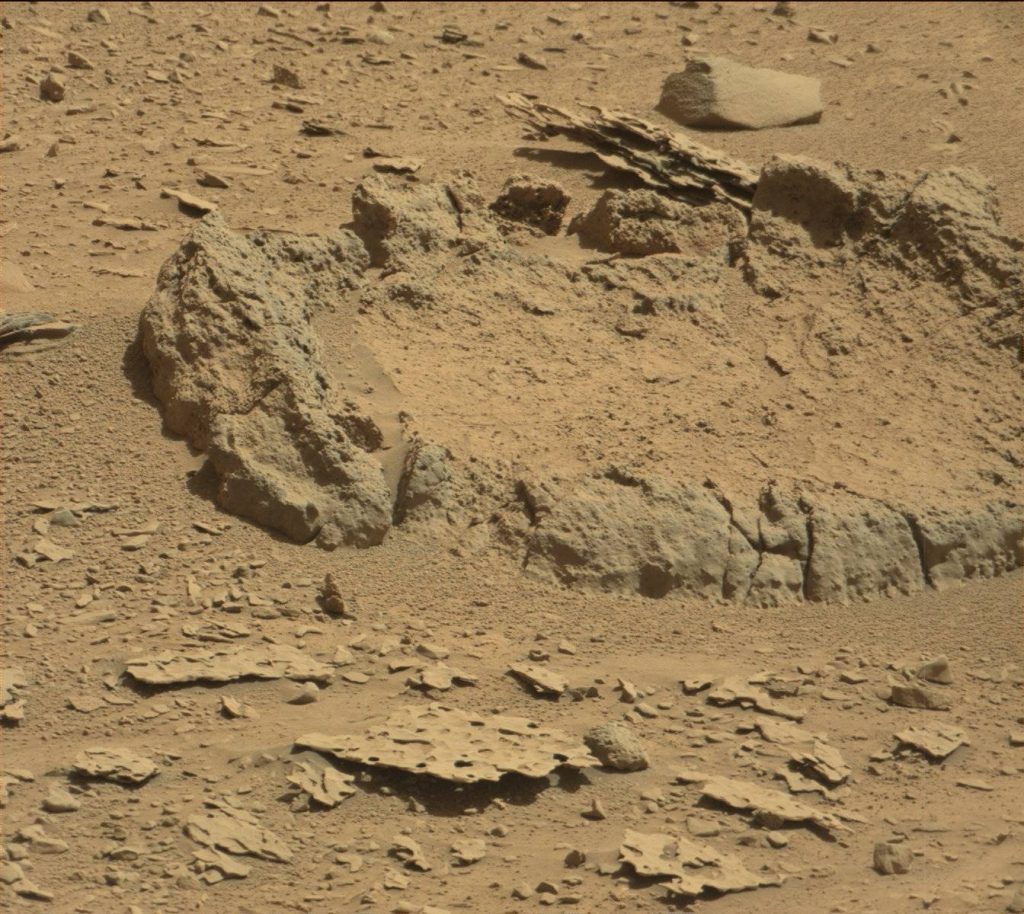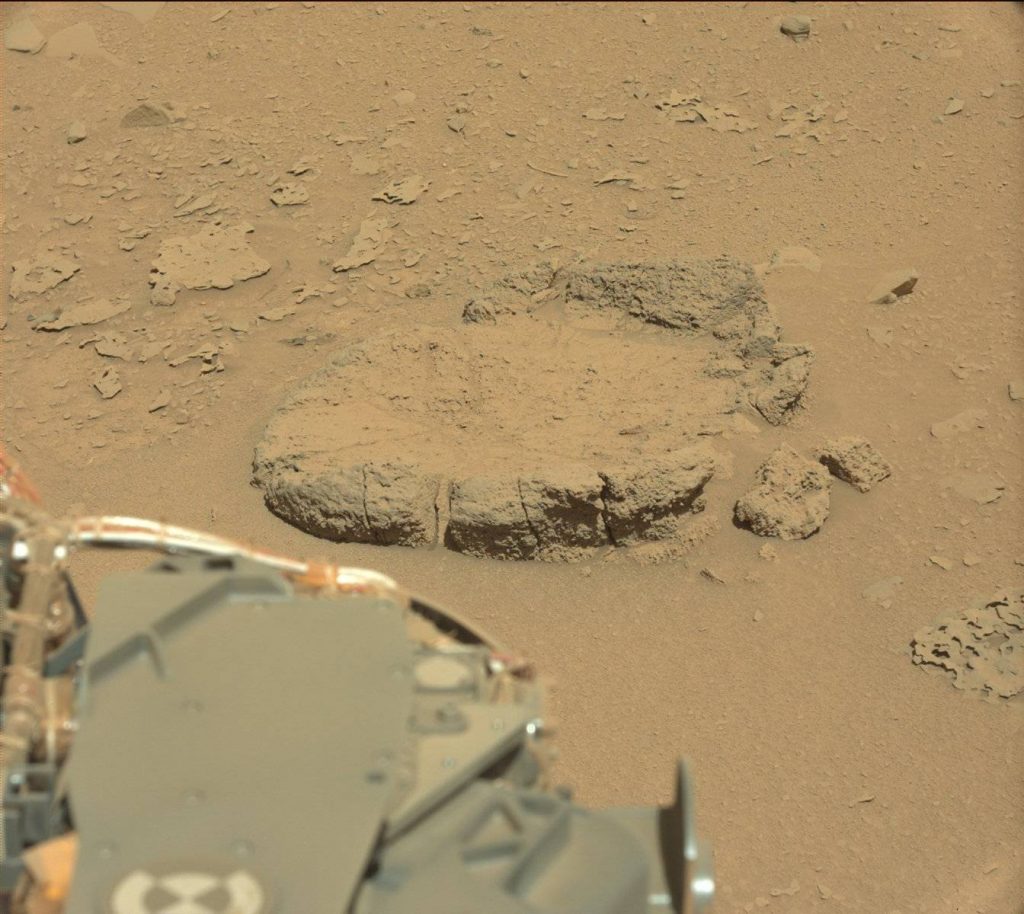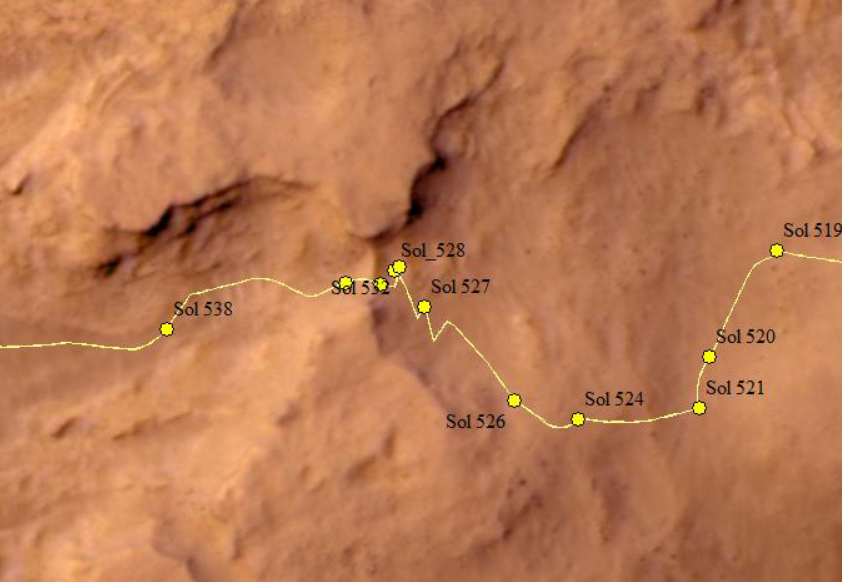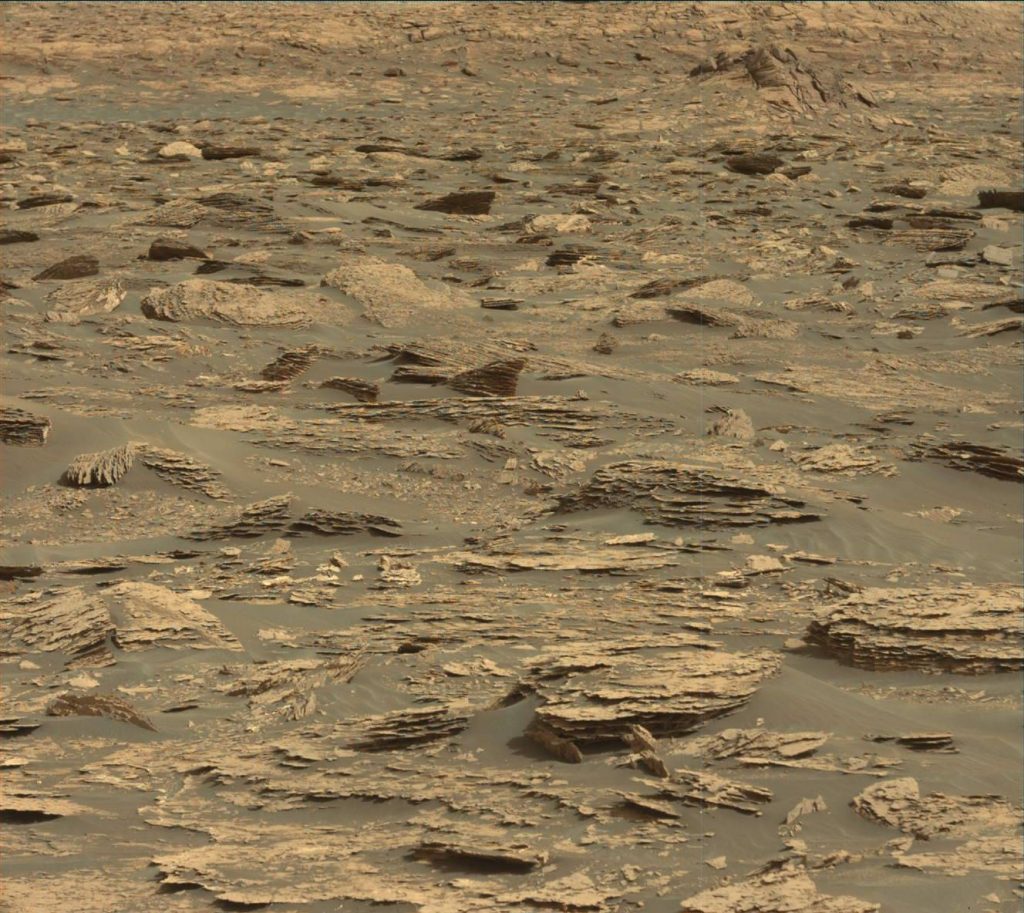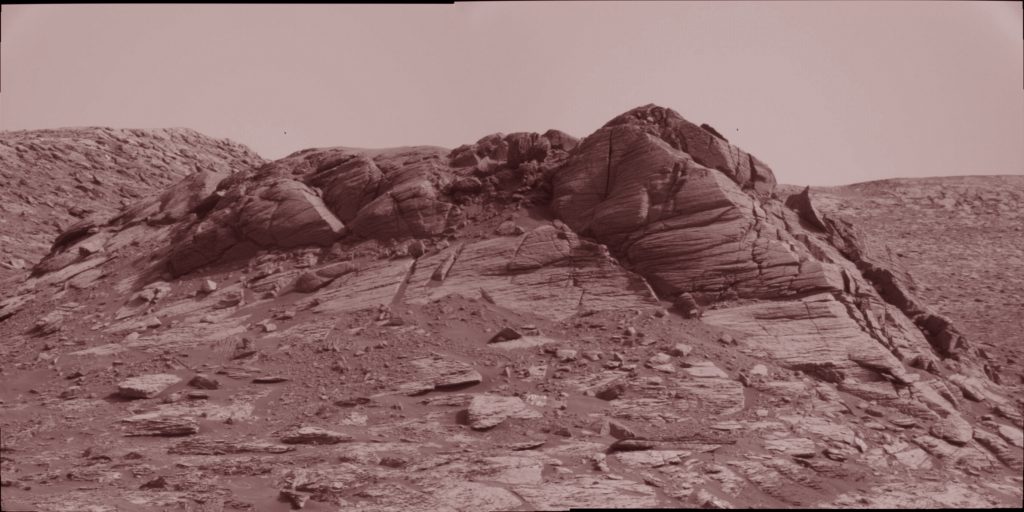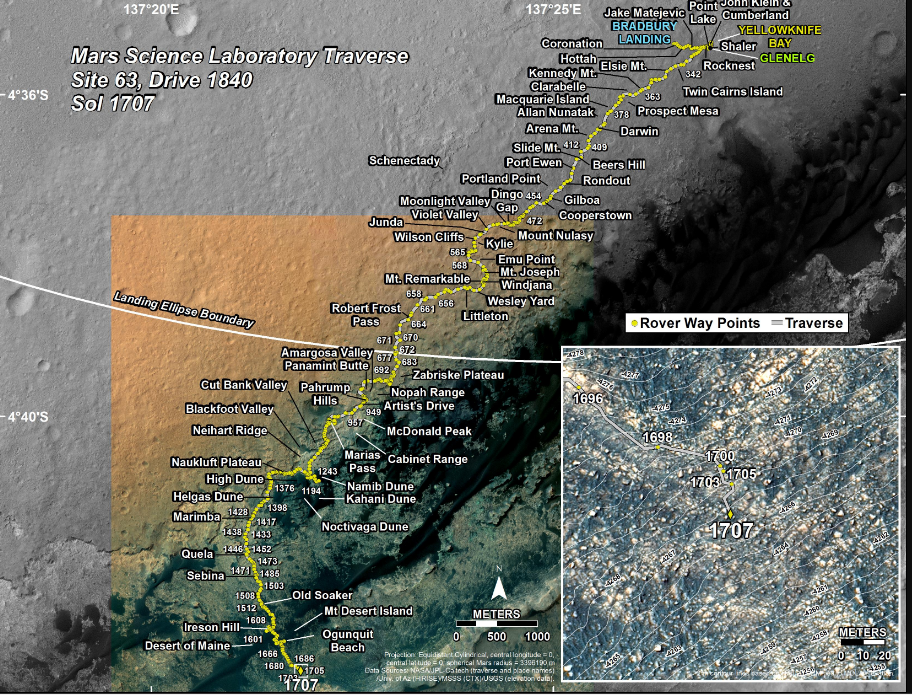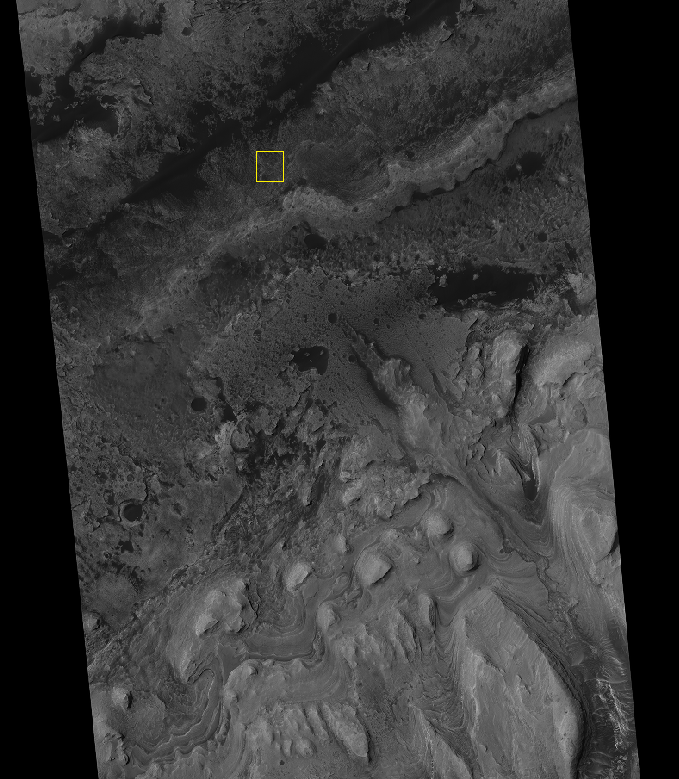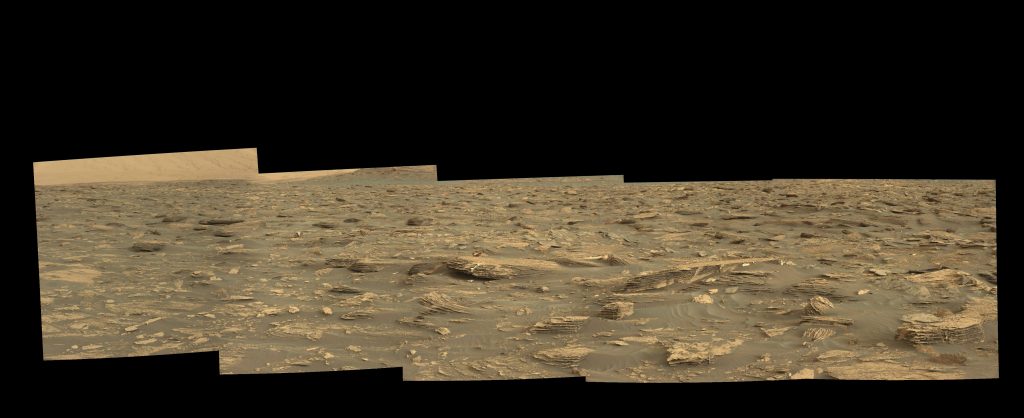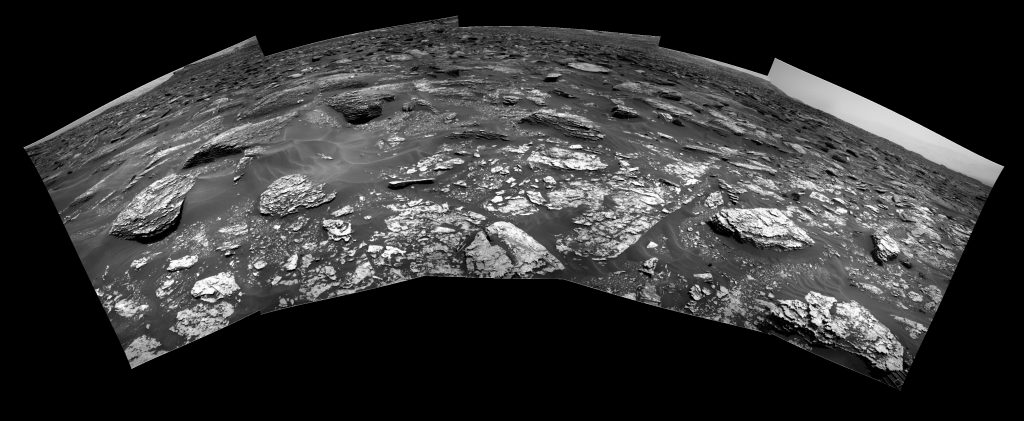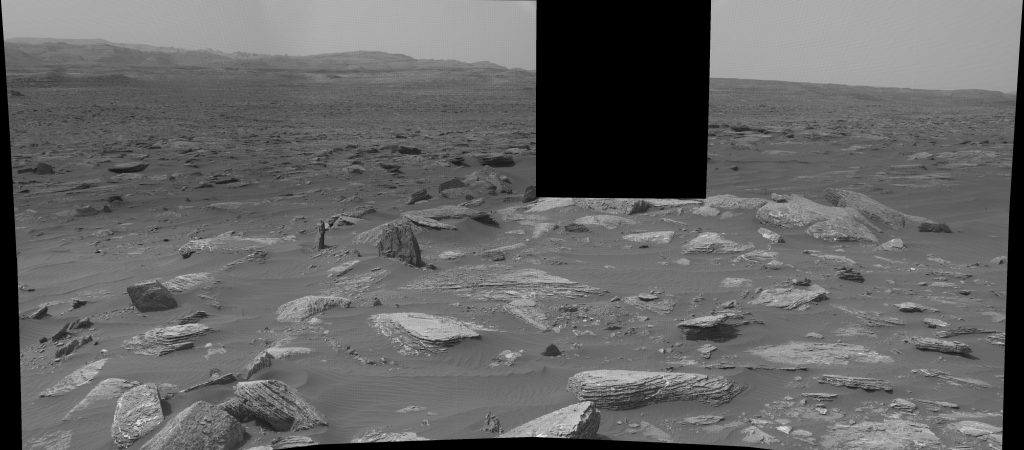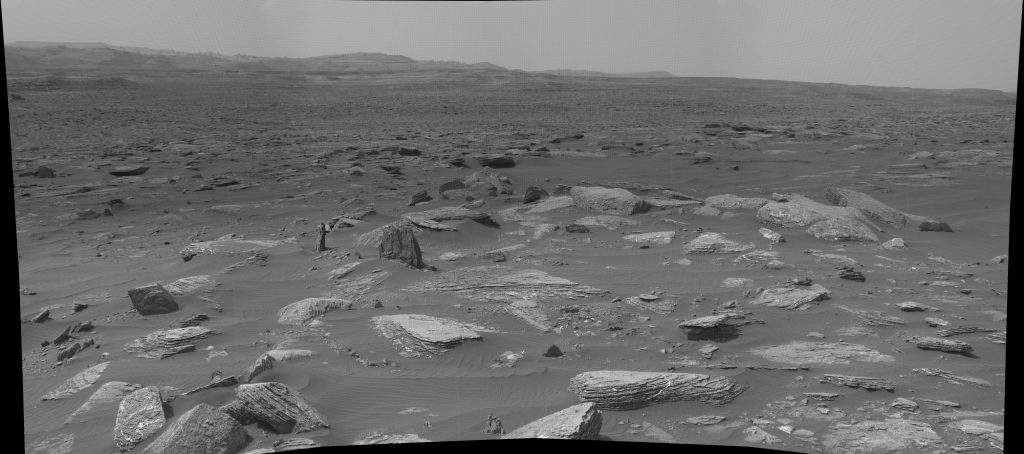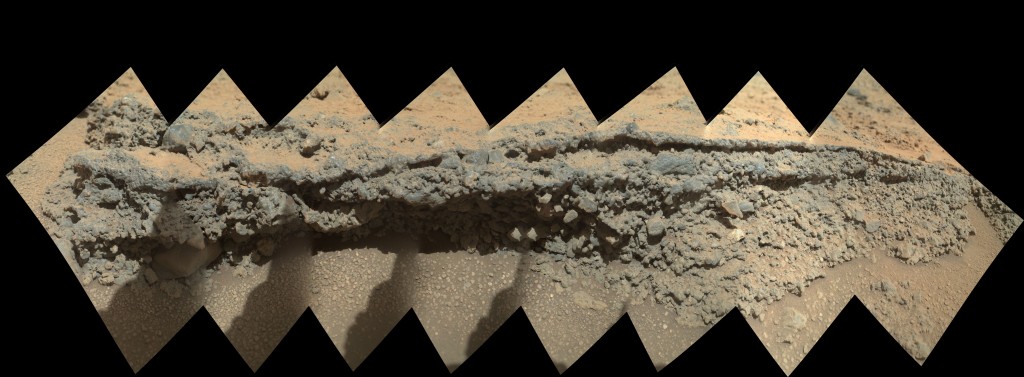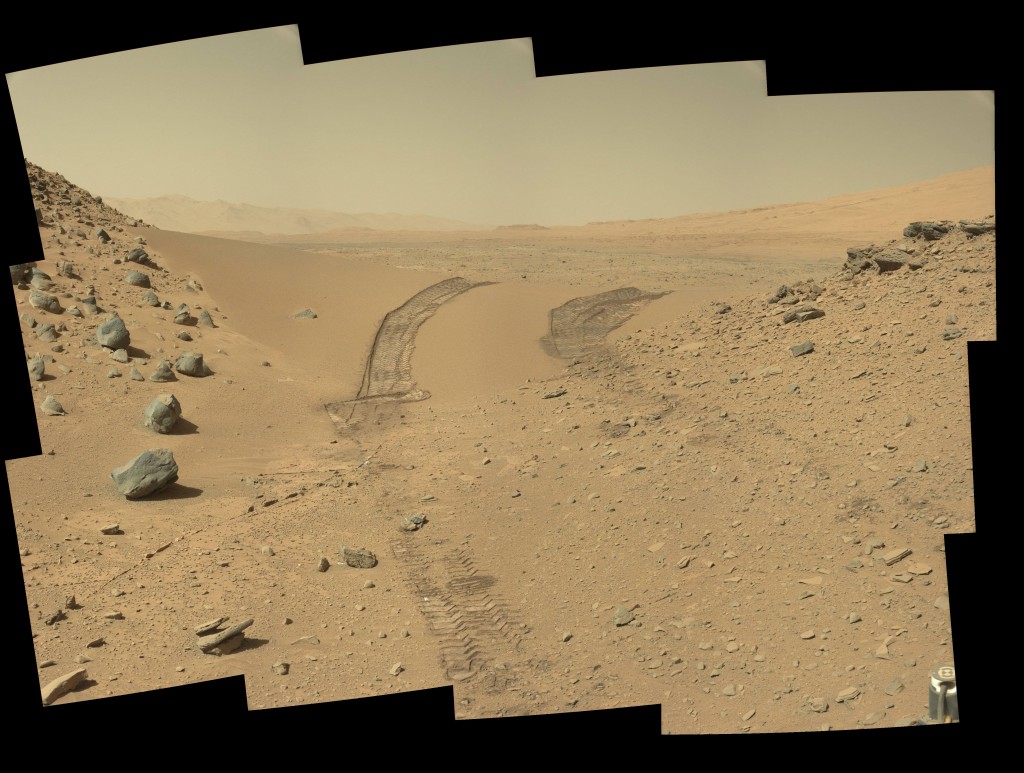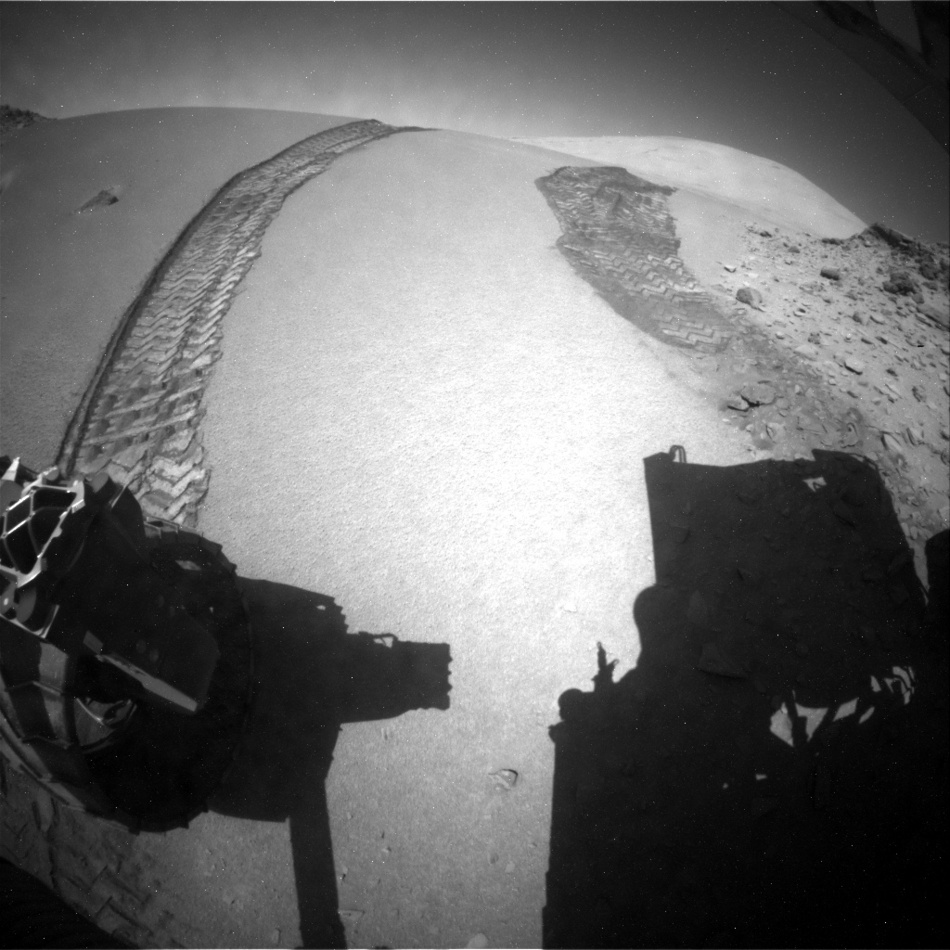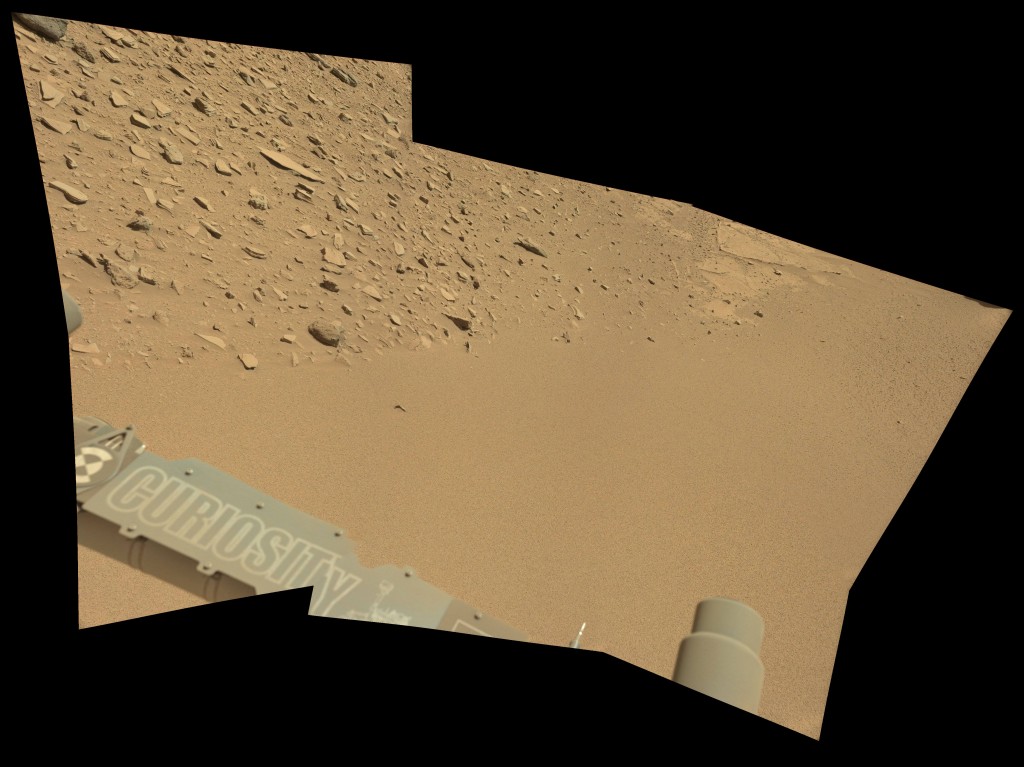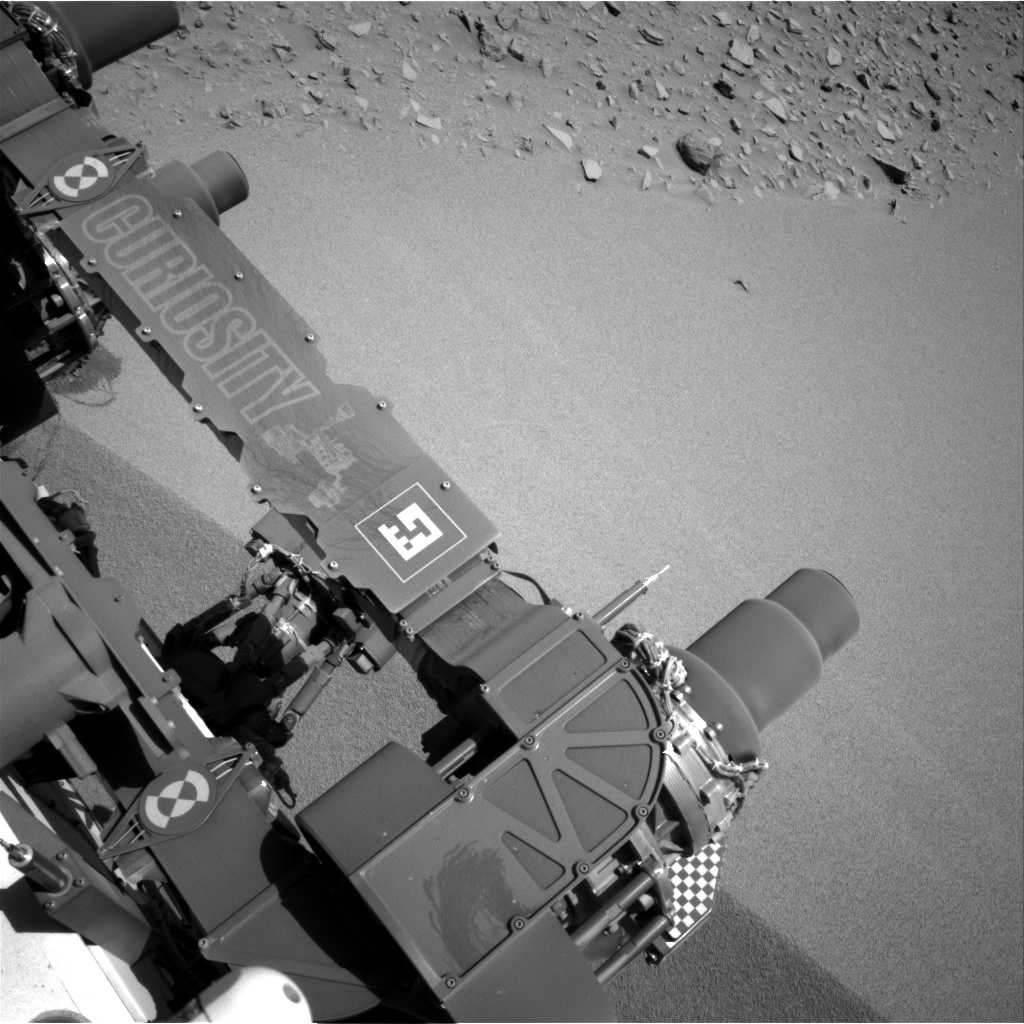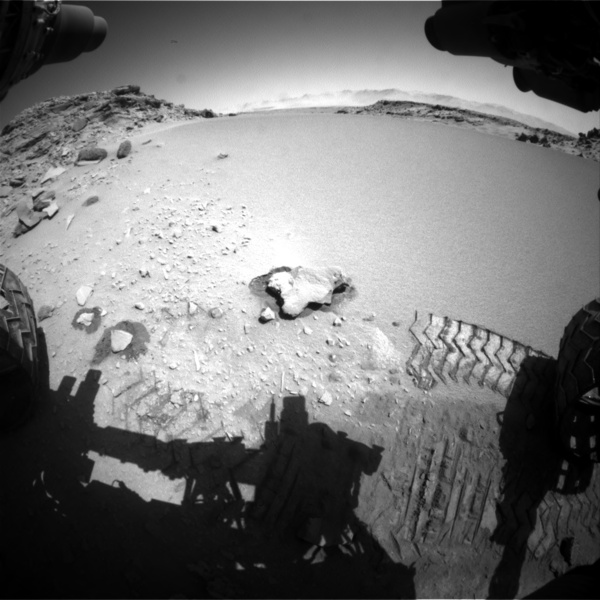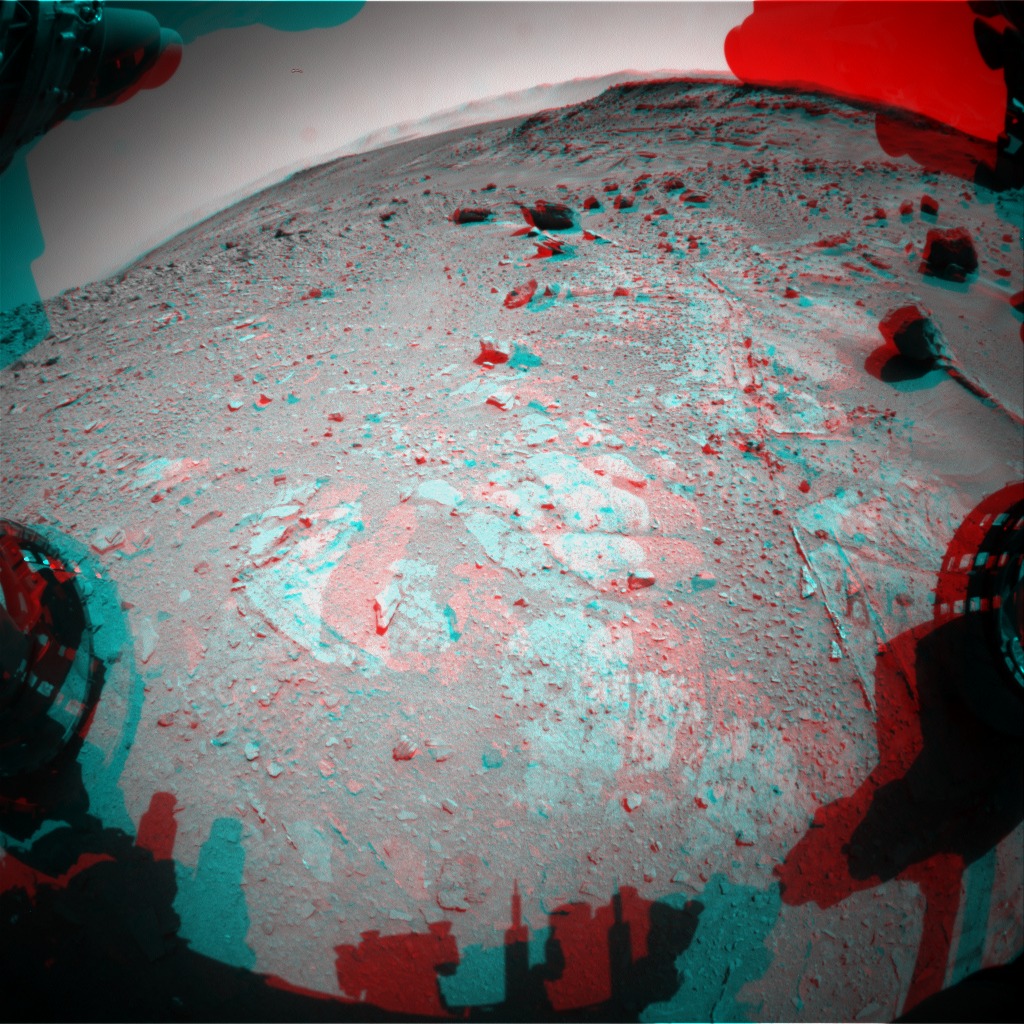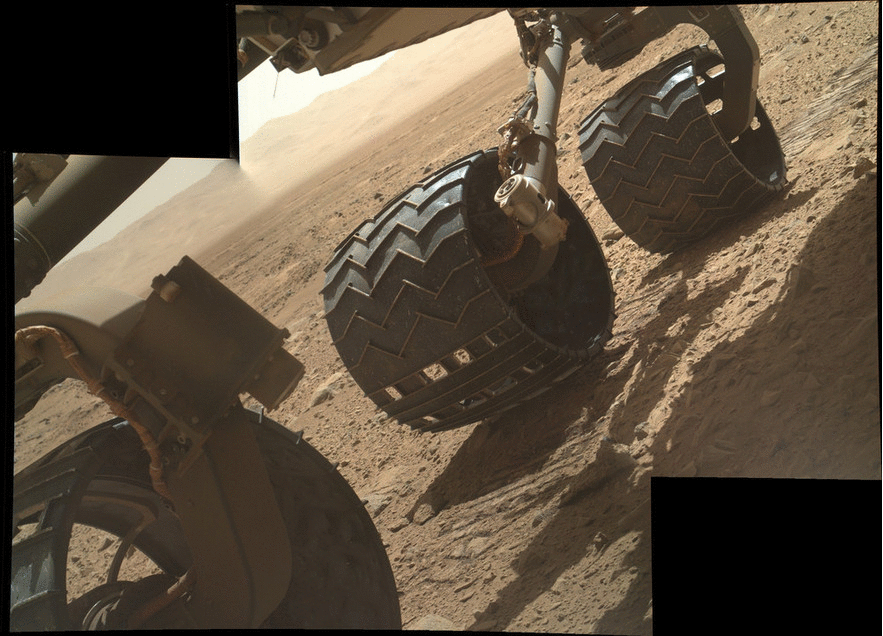The Mars Curiosity Mission Update for Sols 1954-1956 includes the stated goal of … an RMI mosaic of “Bloodstone Hill.”
RMI stands for “remote micro-imager” and refers to the use of the ChemCam camera for simple image acquisition, without sectroscopy. It has a long focal length, so it makes a fair “spot zoom”.
Then the Mission Update for Sols 1955-1957 is titled,
Sol 1957-1958: Onward towards gray patch
and features this image: 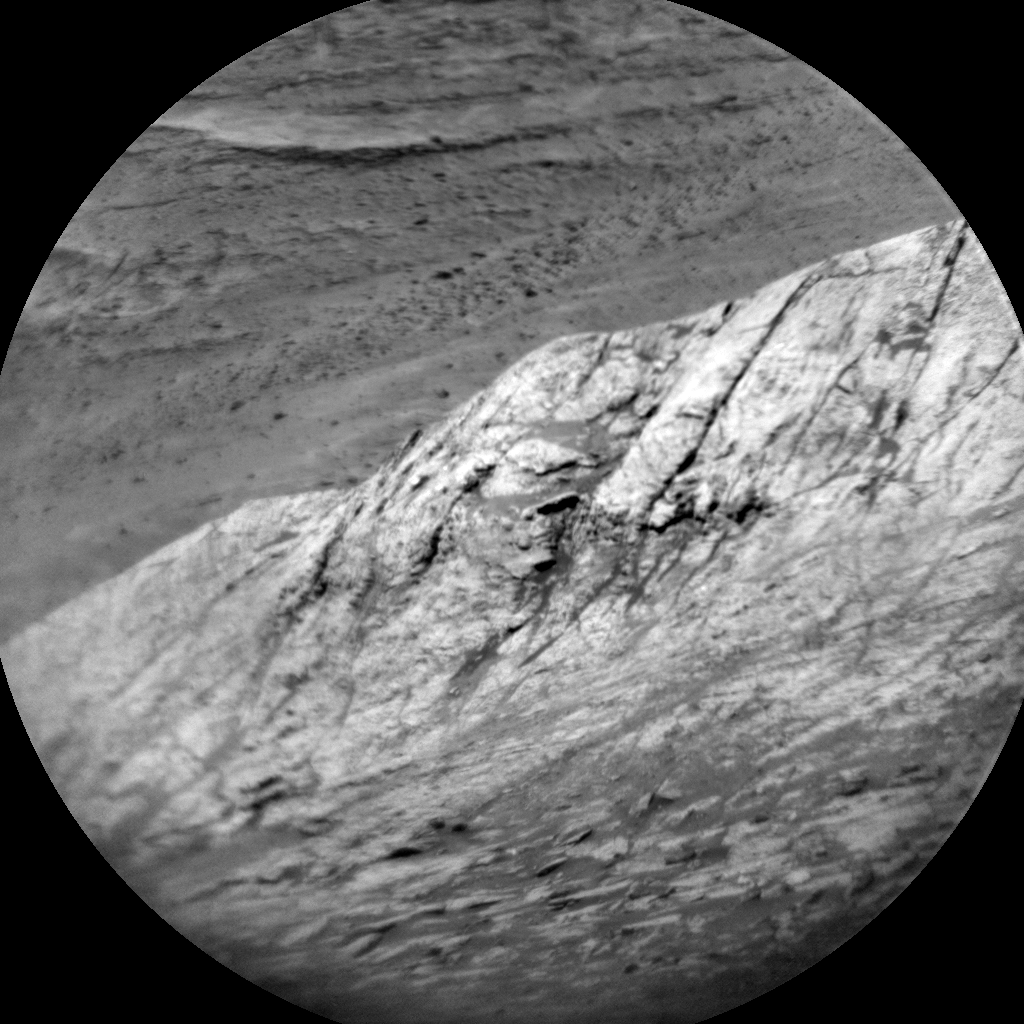 … so I thought for a long time that this was “gray patch”. I don’t want to put anything on the Curiosity Team. The principal goal is not to explain everything to ME. If I have to work a little bit for it, so be it.
… so I thought for a long time that this was “gray patch”. I don’t want to put anything on the Curiosity Team. The principal goal is not to explain everything to ME. If I have to work a little bit for it, so be it.
The text does say, inter alia, “… We’ll also take a Mastcam mosaic of “Bloodstone Hill,” another target from the weekend plan that warranted further investigation – this area is featured in the black and white RMI image above. ” OK.
I made the RMI mosaic from sol 1955 ( including the above image, ) and here it is:
I thought the circular framing would interfere with the mosaic, but the long focal length and narrow FOV kept the stitching very nice.
So where is it? What are we looking at? For the promised Mast Cam mosaic, I only found two images in the very annoying rastered grey rendition. Here they are side by side with a “tetch” of Gaussian blur, and some contrast enhancement:
OK! Great context! … except I still couldn’t place this in a broader scene. Note there is no skyline! This makes it difficult.
Well, I made another mosaic from the Right Navcam 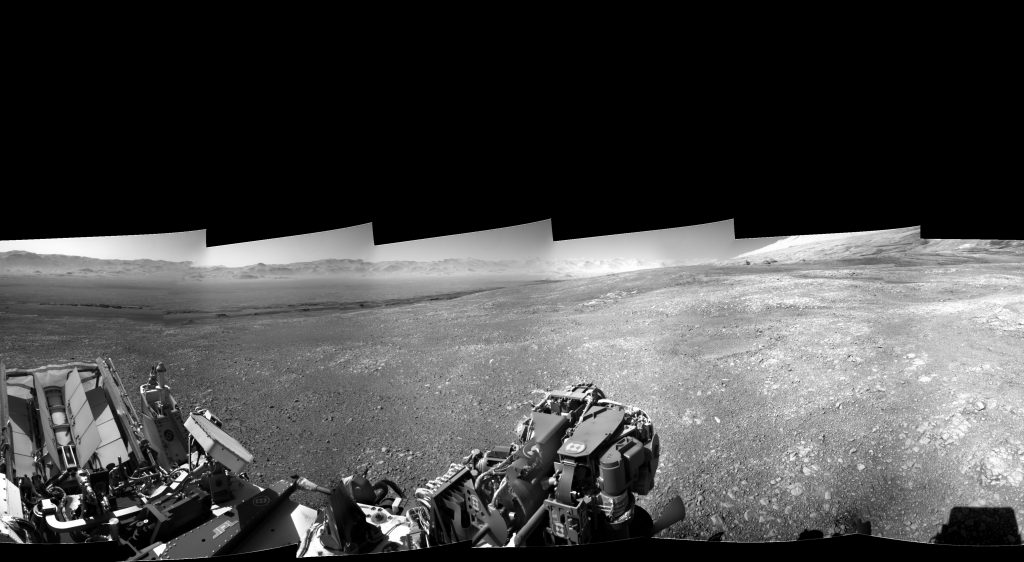
Do you see it? I think it’s very hard to spot. Look at the top center of the rightmost pane, and the elongated whitish feature is the feature at the center of the Mast Cam mosaic above. If you click the image and enlarge it, you will be convinced.

